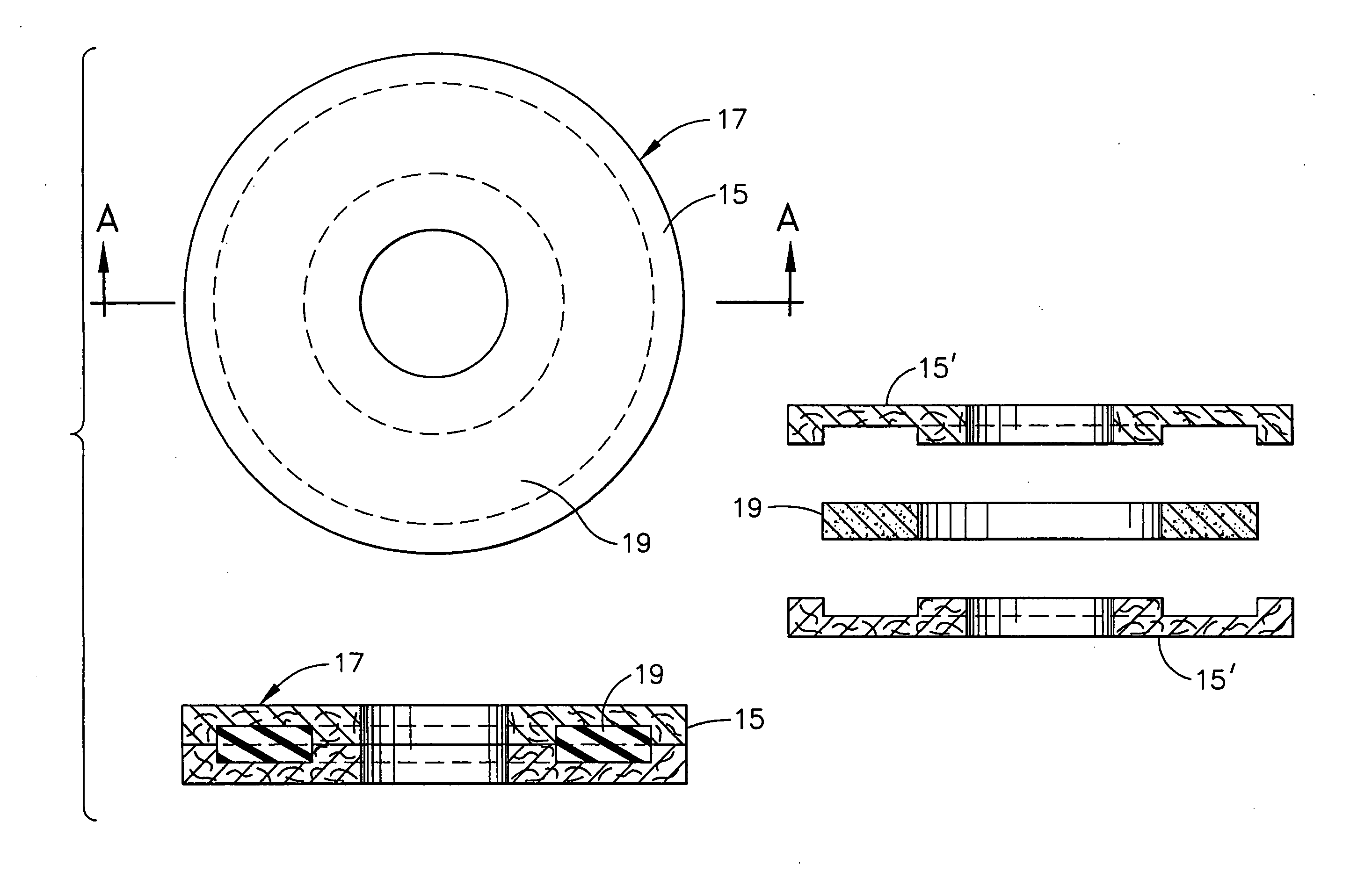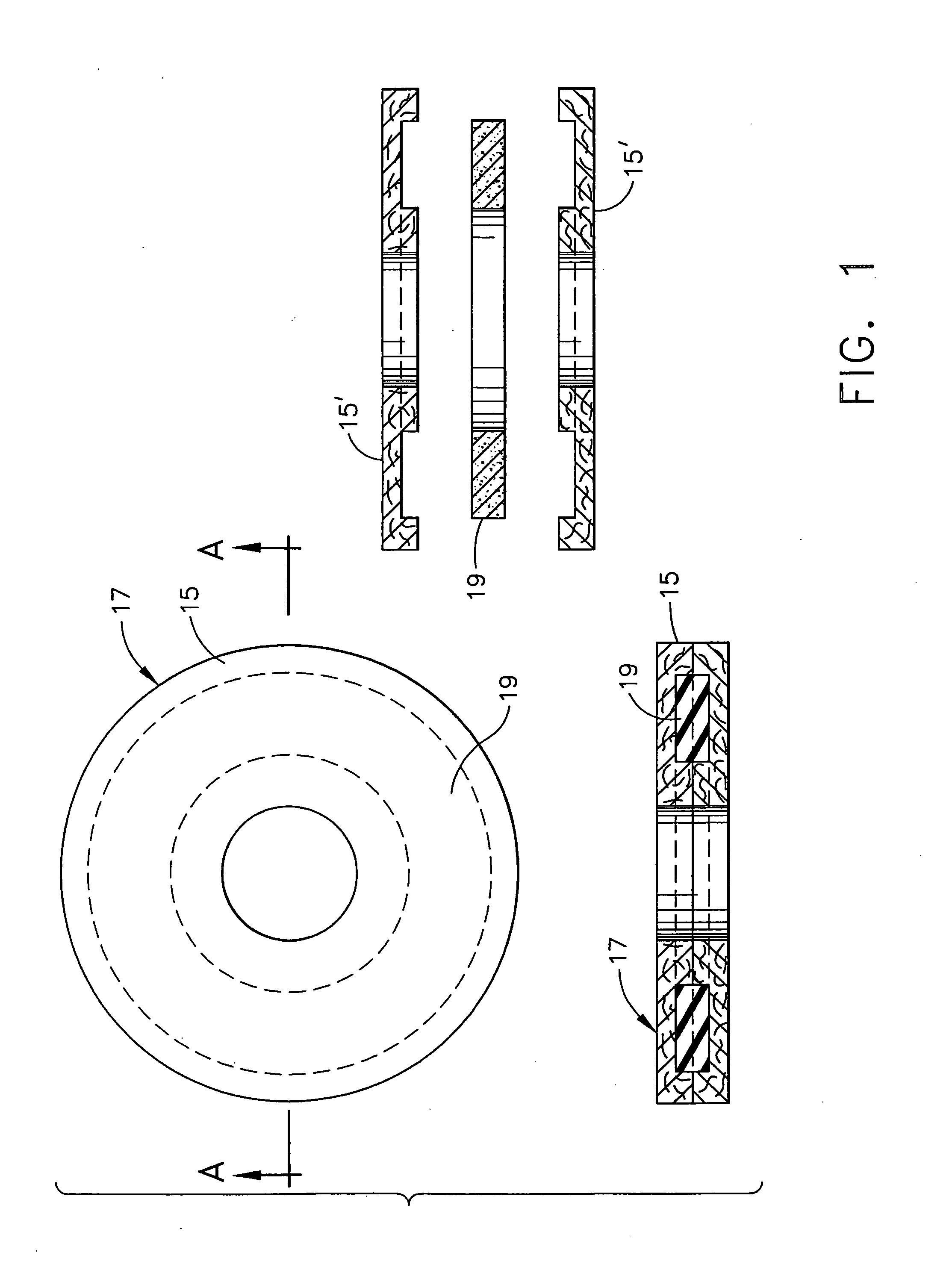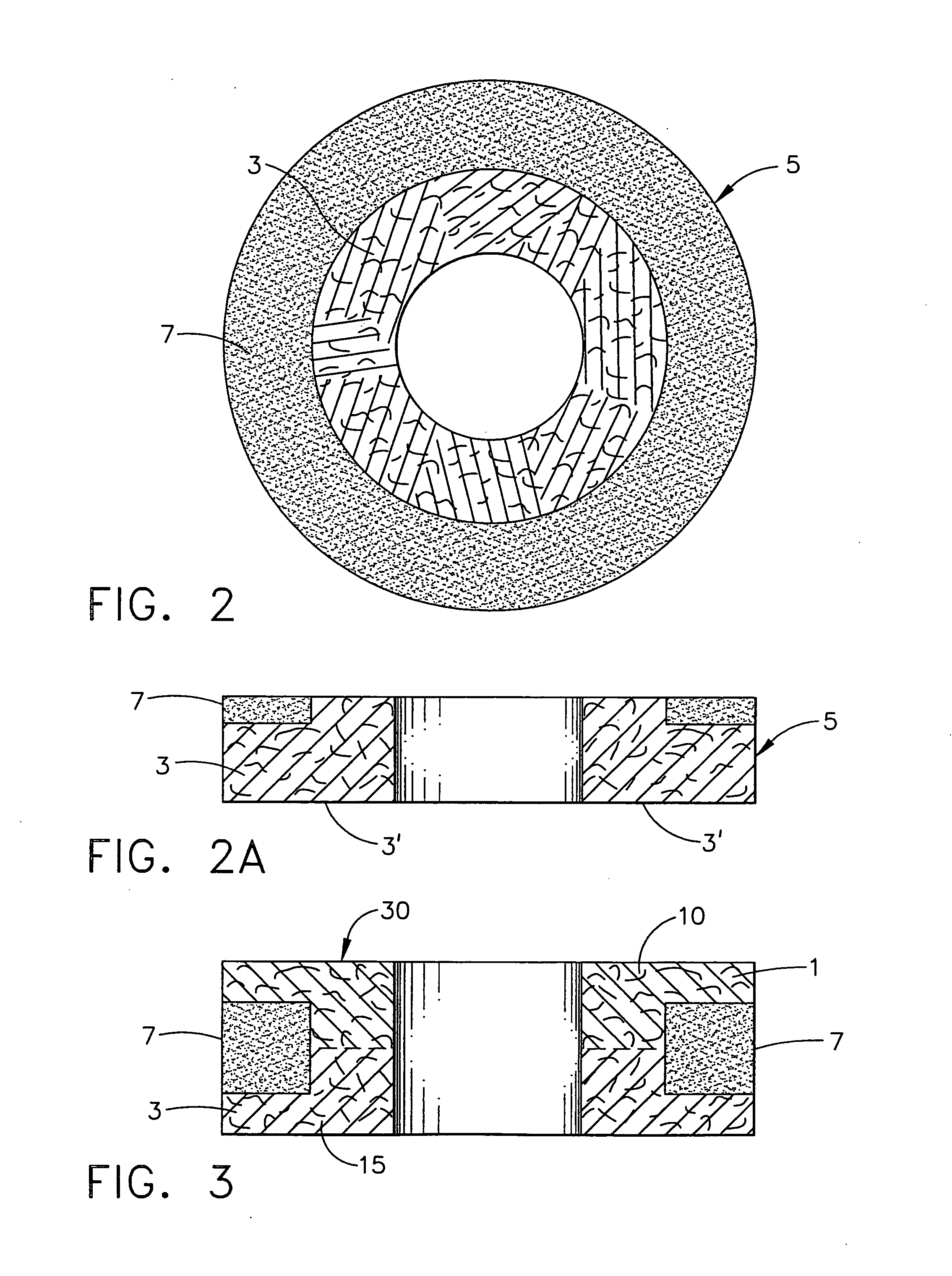Reusable core carbon-carbon composite brake disc
a carbon-carbon composite and brake disc technology, applied in the direction of braking discs, friction linings, paper/cardboard containers, etc., can solve the problems of carbon-carbon composites that cannot be manufactured only slowly, cost of raw materials, maintenance costs, etc., and achieve high heat capacity and high heat capacity
- Summary
- Abstract
- Description
- Claims
- Application Information
AI Technical Summary
Benefits of technology
Problems solved by technology
Method used
Image
Examples
example 1
[0045]In a typical but non-limiting process, 40 parts by weight of chopped polyacrylonitrile fibers are sprayed into an annular heat sink core mold to provide a matrix of fibers in the mold. The mold is configured with an internal ring-shaped space having an external diameter of 18 inches, an internal diameter of 9 inches, and a thickness of 1 inch. Twenty parts by weight of phenolic resin binder in powder form is simultaneously sprayed into the mold. The resulting fibrous matrix containing binder is compressed, and the binder is cured, providing a preform matrix. The preform matrix is infliltrated with pitch to form a pitch matrix. The pitch matrix is subjected to Chemical Vapor Infiltration to form a high heat capacity carbon-carbon composite core.
example 2
[0046]In an alternative method for forming a core for use in accordance with the present invention, a standard nonwoven fabric-based preform is densified to about 2 g / cc. The highly densified preform is then machined to a desired size and used as a core in a brake disc.
example 3
[0047]The reusable core preform manufactured in this way is placed in an annular brake stator disc mold configured with an internal ring-shaped space having an external diameter of 18 inches, an internal diameter of 6 inches, and a thickness of 3 inches. Sixty-five parts by weight of chopped polyacrylonitrile fibers are sprayed into the annular brake stator disc mold to provide a matrix of fibers in the mold and 35 parts by weight of phenolic resin binder in powder form is simultaneously sprayed into the mold. The resulting fibrous matrix containing binder is compressed, and the binder is cured, providing a preform matrix. The preform matrix is filled with pitch to form a pitch matrix. The pitch matrix is subjected to CVI and / or to an additional pitch infiltration step to form a carbon-carbon composite brake disc preform.
PUM
| Property | Measurement | Unit |
|---|---|---|
| Density | aaaaa | aaaaa |
| Density | aaaaa | aaaaa |
| Density | aaaaa | aaaaa |
Abstract
Description
Claims
Application Information
 Login to View More
Login to View More - Generate Ideas
- Intellectual Property
- Life Sciences
- Materials
- Tech Scout
- Unparalleled Data Quality
- Higher Quality Content
- 60% Fewer Hallucinations
Browse by: Latest US Patents, China's latest patents, Technical Efficacy Thesaurus, Application Domain, Technology Topic, Popular Technical Reports.
© 2025 PatSnap. All rights reserved.Legal|Privacy policy|Modern Slavery Act Transparency Statement|Sitemap|About US| Contact US: help@patsnap.com



